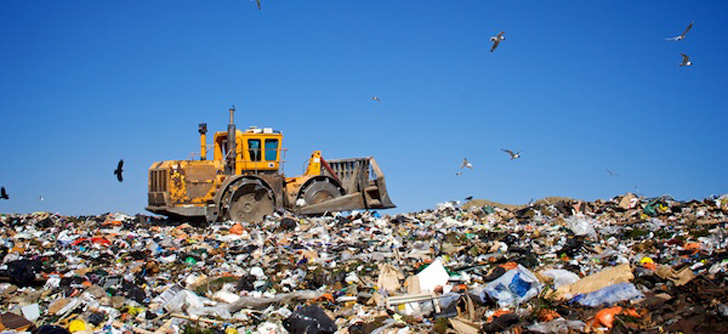Today, PLA is a very popular filament material for Makers. The number of PLA printed products are already huge. Amorphous PLA combines a low melting point, relatively low shrinkage, and is insoluble in water, which makes it ideal for 3D printing at home. But what do you do with your waste or disposed PLA printed products? What is the best, most sustainable way to dispose PLA printed products?
There are several ways PLA products can be disposed. The PLA can be:
- Landfilled, so as to end-up in waste “mountains” in many countries (not all!)
- Combusted
- Composted
- Recycled
Landfilling
In 2012, the citizens of the USA generated 251 million tons of municipal solid waste. 135 million tons of this amount was discarded to landfills, so roughly half of it. I think it is unbelievable that we still discard such huge amounts of waste this way! At 30%, containers and packaging is a top contributor to total municipal waste, which is not a big surprise, I think. PLA is applied in plastic packaging and disposables a lot. This bio-degradable material deserves a better end-of-life destination than a waste mountain.

Combustion
The waste volume for combustion in incinerators for energy recovery is fairly stable and amounted to about 29 million tons in 2012, so about 12% of the total municipal waste. This energy can then be converted into heat and/or electricity. Combustion of PLA printed products yields energy, but waste can be burned only once. So, it is interesting to learn more about other end-of-life alternatives for PLA.
Composted
There is confusion about the compost-ability and the bio-degradability of PLA. As PLA is made from renewable sources, such as starch (e.g. corn, potatoes, etc.), soy protein, cellulose, and lactic acid, it is compostable, but this process is only considered “composted” when 3 criteria are met:
- The material breaks down into carbon dioxide, water, and biomass.
- The PLA fully disintegrates
- No toxic residues are left and the compost supports plant growth
Biodegradable plastic is plastic that will degrade through the action of naturally occurring microorganisms, such as bacteria, fungi etc. over a period of time. Note that there is no requirement for leaving “no toxic residue“, as well as no requirement for the time it needs to take to biodegrade.
In an industrial composting facility, the complete composting process takes about 1 to 6 months, depending on (relatively high) temperature conditions and material type. The rate of composting PLA in industrial facilities is much higher in comparison to the composting rate of PLA at home. As an example, composting disposed PLA containers and cups take 1 – 3 month’s in an industrial facility, and it takes up to 6 month’s at home.
Despite that PLA producers, retailers, and consumers are positive about the compost-ability of PLA, Jenifer Shen argues that most PLA ends up at landfills and not in composting facilities! Why? Transfer stations that sort municipal solid waste have difficulties sorting mixed PLA and PET plastic streams, as they are both transparent. In case PLA contaminates waste streams of other plastics, buyers offer lower prices or are not interested in purchasing the recycled material at all. In addition, the compost of composters in the USA must be compliant with Organic Materials Review Institute (OMRI) regulations. In accordance to Shen, PLA is not 100% compostable. In case the compost still contains PLA residues, their compost does not meet the OMRI regulation requirements. Therefore, many composters regard PLA as a “contaminant”, too. Despite this, the general trend for composting organic municipal waste is growing and amounted up to 21 million tons, so roughly 5% of the total generated waste in the USA.
Recycling
In accordance to Shen, the best PLA end-of-life option is recycling, just like other plastics. In a European study it appears that the environmental impact of recycling PLA is over 50 times better than composting and 16 times better than combusting PLA! So, Makers should recycle their own PLA! Two opportunities come to mind. The first opportunity is to utilize instant plastic recycling machines, such as the Filabot, for home or small business purposes. These machines collect the printed waste and extrude filament which can be re-used in the printer. Based on my experience in the recycled plastics business, beware of mixing different waste and/or contaminated plastics in such home recycling machines! Basically an inhomogeneous or contaminated plastic mixture might result in poor printing results. Wash and dry only one plastic type before extruding it and clean your machine regularly. The second opportunity is to simply apply ready-to-use PLA filaments based on purified recycled PLA, which are commercially available now. Both ways help reduce one’s environmental footprint and increase sustainability. In conclusion, printing recycled PLA makes sense!



